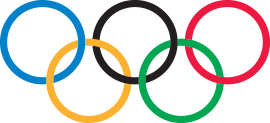Testing Procedures
Athletes who compete in sport and who are under the jurisdiction of the antidoping rules, can have their urine and/or blood tested anytime, anywhere by IFMA or by any NADO. Testing can be conducted in-competition and out-of-competition, such as at an athlete’s home, place of work or training venue. The IFMA In-Competition and Out-Of-Competition Testing Program are independently managed by ITA (International Testing Agency).
How athletes are selected for testing?
- In-competition: athletes can be chosen by random selection, finishing position or being targeted for a particular reason
- Out-of-Competition – athletes may be tested anytime, anywhere and with no advance notice
The Testing Process
Doping Control
Athlete’s can be selected for urine and/or blood testing at any time and any place.
Athlete Selection
Athlete will be notified by a doping control officer (DCO) or chaperone about her/his selection for doping control. The athlete will be asked to sign a form confirming that she/he understands her/his rights and responsibilities.
Report to station
The athlete must report to the doping control station without delay. The DCO may allow a delay in reporting – however only for a valid reason.
Choose the sample collection equipment
Athletes are given a choice of individually sealed sample collection vessels and kits to choose from.
Provide sample
Athletes will be asked to provide urine and/or blood samples. Urine sample is provided under the direct supervision of a DCO or a witnessing chaperone of the same gender. A volume of minimum 90mL is required for urine samples (if the 1st sample is not 90mL the athlete may be required to wait and provide an additional sample).
Before the blood test, the athlete will be asked to be seated for a period of time. Then, she/he will choose a sample collection kit, inspect it and verify that all the sample code numbers match. If the kit includes pre-printed bar code labels, the athlete will be asked to place these on the tubes. Blood kits can include up to 5 tubes: 2 tubes (A/B Samples) are for analysis of whole blood, 2 tubes (A/B) are for analysis of serum, and 1 tube (just an A sample) is for the Athlete Biological Passport (ABP). Each tube may be about 3-5mL of blood.
Splitting the sample (urine)
Athletes will split their urine sample into an A and B bottle.
Seal the samples
Athletes will seal the A and B bottles or blood tubes as per DCO’s instructions.
Complete the Doping Control Form
Athlete will check and confirm that all the information is correct, including the sample code number and their declaration of medications and/or products they have used, and for a blood test, if the athlete have had any blood transfusions within the previous 3 months. Athlete will receive a copy of the doping control form.
The analysis
All samples are sent to a WADA accredited laboratory.
Athlete Biological Passport (ABP)
The fundamental principle of the Athlete Biological Passport (ABP) is to monitor selected biological variables over time that indirectly reveal the effects of doping rather than attempting to detect the doping substance or method itself.
Anti-doping organizations can integrate the Athlete Biological Passport into the larger framework of a robust anti-doping program in order to:
Identify athletes requiring further attention through intelligent and timely interpretation of Passport data. The ABP provides valuable information that can be used to direct anti-doping activities such as Target Testing or investigations more effectively; and
Pursue possible anti-doping rule violations in accordance with World Anti-Doping Code (Code) Article 2.2: Use or attempted use by an athlete of a prohibited substance or a prohibited method.

